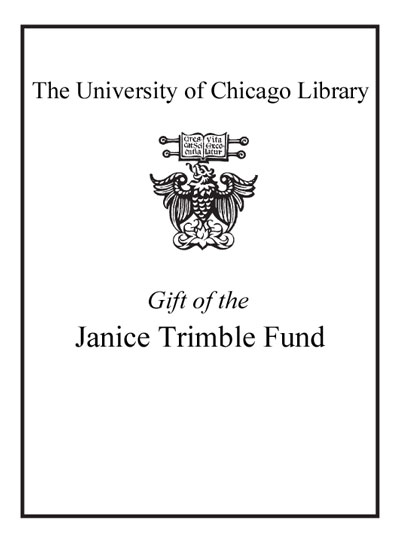The experientiality of narrative : an enactivist approach /
Saved in:
| Author / Creator: | Caracciolo, Marco, author. |
|---|---|
| Imprint: | Berlin ; Boston : De Gruyter, [2014] |
| Description: | xiii, 231 pages ; 24 cm. |
| Language: | English |
| Series: | Narratologia : Contributions to narrative theory ; volume 43 Narratologia ; 43. |
| Subject: | |
| Format: | Print Book |
| URL for this record: | http://pi.lib.uchicago.edu/1001/cat/bib/10073984 |
Table of Contents:
- 0. Introduction
- 0.1. Out of Which Hat
- 0.2. Why Experience, and Why This Book
- 0.3. Why This Book Is Not an Empirical Study
- 0.4. Cognitive Science: A Thumbnail Sketch
- 0.4.1. From Computational Models to Enactivism
- 0.4.2. Conceptual Thought and Embodiment
- 0.4.3. The Self, Folk Psychology, and Phenomenology
- 0.5. Outline of Chapters
- Part I. Notes for a Theory of Experientiality
- 1. Not So Easy: Representation, Experience, Expression
- 1.1. From Representation to Expression
- 1.2. On Characters' Experiences
- 1.3. Expressive Devices
- 2. The Existential Burn: Storytelling and the Background
- 2.1. The Network of Experientiality
- 2.2. Focus on the Experiential Background
- 2.2.1. Opening Moves
- 2.2.2. Mapping the Background
- 2.2.3. Narrative and the Background
- 3. Experience, Interaction, and Play in Julio Cortázar's Hopscotch
- 3.1. Dewey and Winnicott on Experience
- 3.2. A Third Possibility
- 3.3. Other Paths: Beyond Vertical Transcendence
- 3.4. Bringing the Strands Together
- Part II. From Experiential Traces to Fictional Consciousnesses
- 4. Blind Reading: Bodily and Perceptual Responses to Narrative
- 4.1. The Enactivist Theory of Experience
- 4.2. Enacting Narrative Space
- 4.3. Enacting Characters' Bodily-Perceptual Experiences
- 4.4. Enacting Qualia Through Metaphorical Language
- 5. Fictional Consciousnesses: From Attribution to Enactment
- 5.1. Consciousness-Attribution
- 5.2. Enacting Benjy: A Slow-Motion Analysis
- 5.3. Consciousness-Enactment
- 5.3.1. What Is Consciousness-Enactment?
- 5.3.2. Triggers of Consciousness-Enactment
- 5.3.3. Mental Simulation as the Cognitive Basis for Consciousness-Enactment
- 6. Fictional Consciousnesses: Self-Narratives and Intersubjectivity
- 6.1. Narrative Selves?
- 6.2. Focus on Self-Narratives
- 6.3. Engaging with Characters: Between Primary and Secondary Intersubjectivity
- 6.4. Readers and Characters in Ian McEwan's On Chesil Beach: A Case Study
- Part III. Embodied Engagements and Their Effects
- 7. Embodiment, Virtuality, and Meaning in Readers' Reconstruction of Narrative Space
- 7.1. From Mental Simulation to Fictionalization
- 7.2. Fictional Anchors: Forster's Deputy Focalizor and "Strict" Focalization
- 7.3. Virtual Presences: "Empty Center" and Aperspectival Texts
- 7.4. A Scale of Fictionalization
- 7.5. The Embodied Self and Beckett's Company
- 8. Mental Myopia: Narrative Patterns and Experiential Texture in Vladimir Nabokov's The Defense
- 8.1. From Chess Consciousness to Experiential Blindness
- 8.2. The Moves of His Life
- 8.3. Beyond?
- 8.4. Three Functions of Narrative: Overreading The Defense
- 9. Conclusion: Where to Go from Here?
- Works Cited
- Index

